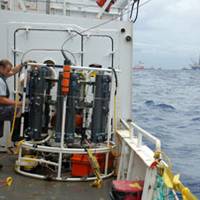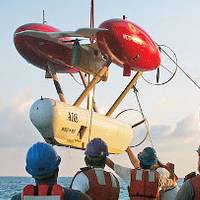WHOI Investigates Deepwater Horizon Oil Spill

Taking another major step in sleuthing the 2010 Deepwater Horizon oil spill, a research team led by the Woods Hole Oceanographic Institution (WHOI) has determined what chemicals were contained in a deep, hydrocarbon-containing plume at least 22 miles long that WHOI scientists mapped and sampled last summer in the Gulf of Mexico, a residue of the Deepwater Horizon oil spill. Moreover, they have taken a big step in explaining why some chemicals, but not others, made their way into the plume.
Underwater Hydrocarbon Plume in Gulf

Scientists funded by the National Science Foundation (NSF) and affiliated with the Woods Hole Oceanographic Institution (WHOI) have detected a plume of hydrocarbons at least 22 miles long and more than 3,000 ft below the surface of the Gulf of Mexico, a residue of the BP Deepwater Horizon oil spill. The 1.2-mile-wide, 650-ft-high plume of trapped hydrocarbons was detected during a ten day subsurface sampling effort from June 19-28, 2010 near the wellhead. The results provide a snapshot of where the oil has gone as surface slicks shrink and disappear.
Deep-Sea Robot Lost at Sea

A deep-sea exploration robot — one of the first successful submersible vehicles that was both unmanned and untethered to surface ships — was lost at sea Friday, March 5, on a research expedition off the coast of Chile. The 15-year-old Autonomous Benthic Explorer, affectionately nicknamed ABE, was launched late on the night of Thursday, March 4, and had reached the seafloor to begin its 222nd research dive when, in the early hours of Friday morning, all contact with the surface vessel abruptly ceased. All efforts to reestablish contact failed.





